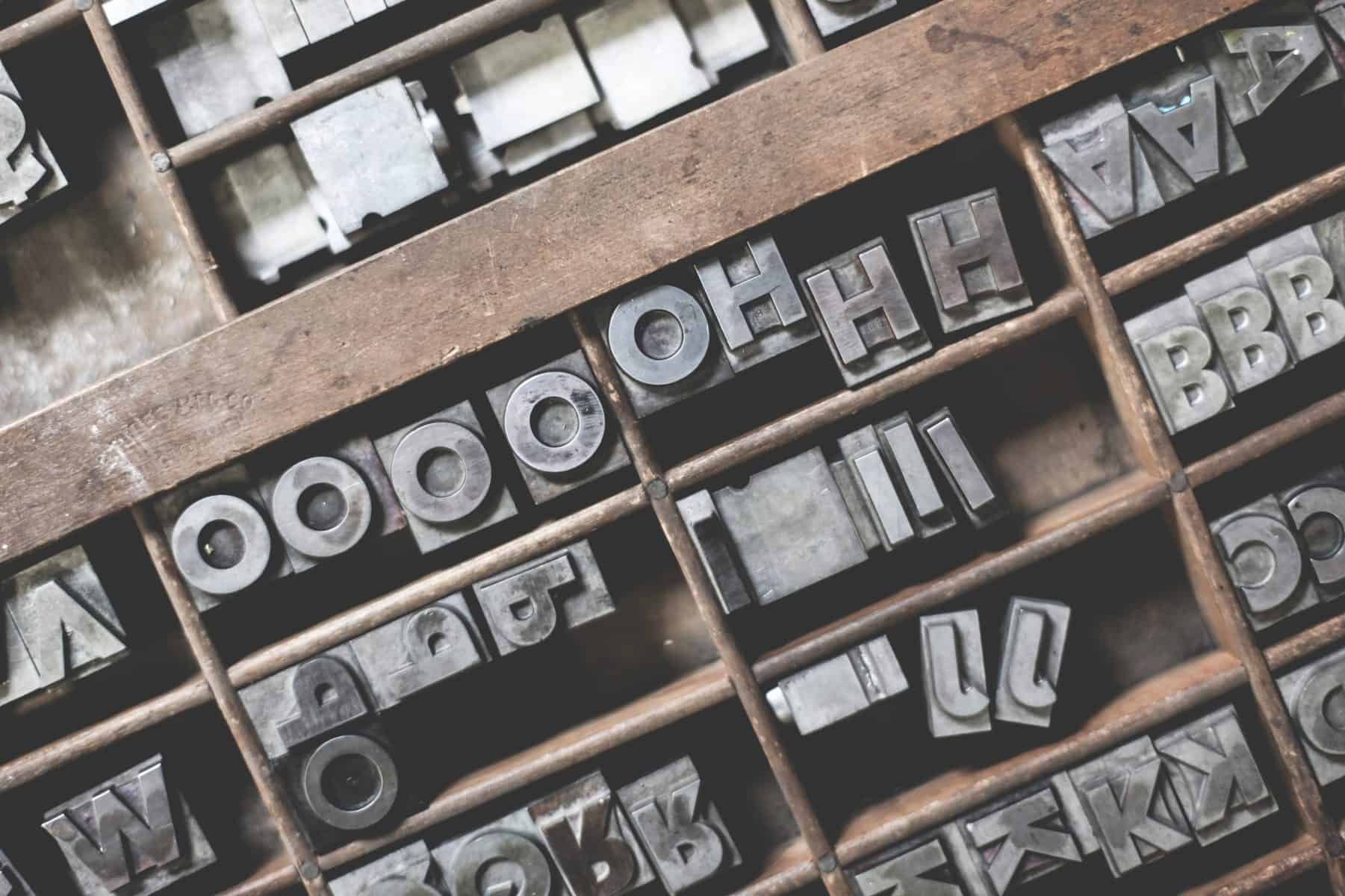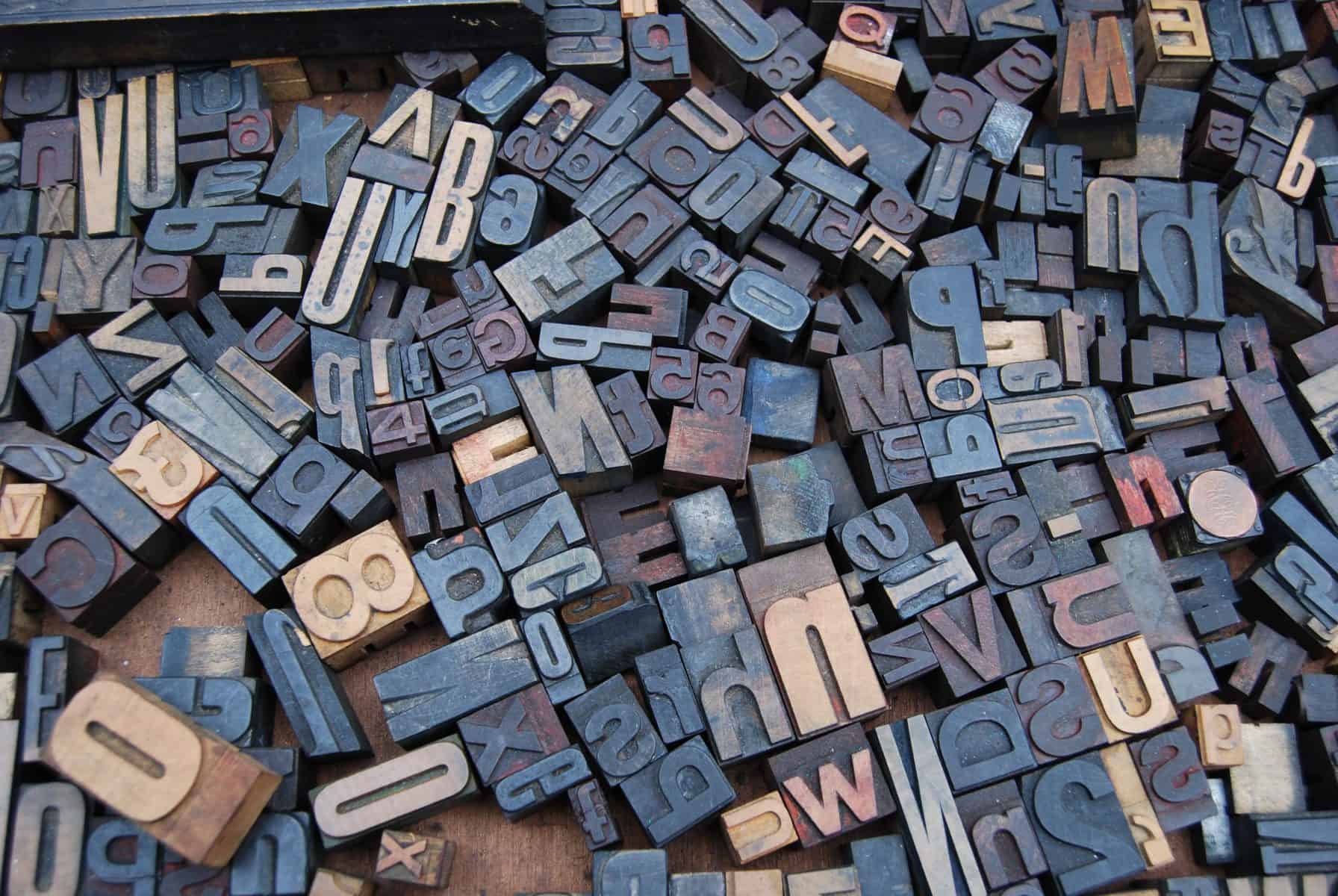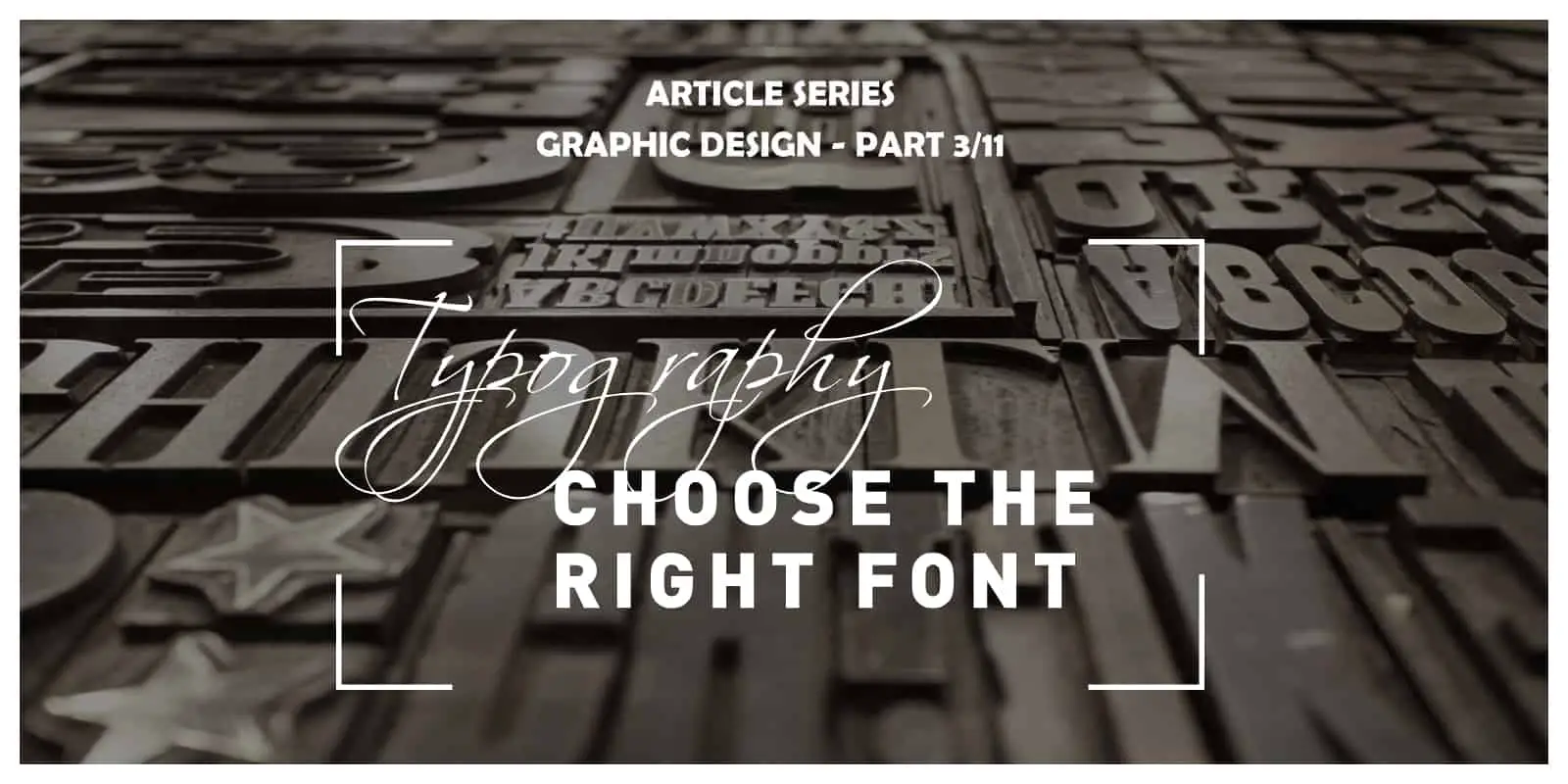Typography: How to Choose the Proper Font is the third article in the Ultimate Graphic and Web Design Basics Guide. It was meant for those looking to get their career started as designers, but also for those that are interested in the design process. Within the following series of the nine articles, and two “bonus tips” articles, we will cover everything you need to know to get started. Stay tuned for the following articles:
- The Basics of Graphic Design: What It Is, and What’s It For?
- Color Theory & Psychology
- Typography: How to choose the proper font
- Layout & Composition
- Photography in Graphic Design
- Branding & Logo Design
- How Graphic Design Translates into Web Design?
- User Experience – How to get it right?
- Modern Trends in Design
- Bonus tip: How to find your first gig
- Bonus tip: How to work with clients
Stay tuned for the full series!
Typography is something all of us have heard about, but not all know for what exactly it stands for. It is the act or process of working with letterforms, better known as typefaces, arranging them visually in space, or also designing a new type. Typography is something that is timeless and ever-changing, so it’s never too early or too late to start learning about it.
The biggest “mistake” people make in typography is using the terms “font” and “typeface” interchangeably as if they are the same. Anyone familiar with the basics of typography will know to do that is pretty incorrect, but if you aren’t one of those people, here is a little explanation.
A typeface is a family of fonts. You can think of it as different accents within a language that all have unique pronunciations and characters. Unlike language and accents, typefaces communicate visually, not literally. The purpose of typefaces is to add a dash of sophistication to the message but not to distract from it.
Type can be roughly divided into two categories, functional and decorative. The main purpose of functional types is to inform and get the message across clearly; that is why all of them are very readable. Decorative fonts are more fancy and playful ones. Informing is still their priority (most of the time); they just do it in a more creative way.
Choosing the proper font is essential for effective typography and can significantly impact the success of website branding services. The right font not only enhances readability but also conveys the brand’s personality, ensuring a cohesive and professional look. By carefully selecting fonts that align with the brand’s identity, website branding services can create a memorable and engaging user experience.
Basic terms to keep in mind
Although this article isn’t Typography 101, where you will learn all the necessary things about typography, here are some important terms that will be useful for you to know.
Tracking – this is the overall space between characters.
Kerning – the space between specific characters; it varies throughout the word since different letters fit together differently. Some fonts just come with it because of their style.
Leading – also known as line spacing, it is the space between two lines of text.
Hierarchy – Emphasizing a part of text using different fonts, guiding the reader’s attention to the most important parts.
The importance of typography
You might be thinking, “yeah, this is all cool, but why should it be important to me?”. Typography should be important to everyone, not just to the people that have it as a part of their profession. We are surrounded by typography everywhere we look, street signs, websites, books, posters, packaging.
If used correctly, the type will attract and hold the attention of the audience, but also do the opposite if not. It is something that will make your project go from ordinary to extraordinary when you choose the right one or make it fail its full potential if you go for the wrong one.

Important parts of your text will be emphasized without much effort using typefaces and also look harmonious at the same time.
Just how the tone of our voice impacts the things we say, a typeface impacts the things we write. A typeface can do a lot of things to a person; it can tell a story, it can evoke interest, it can persuade us to do something/ make certain choices, consciously or unconsciously.
Every piece of text you have ever read was in a certain typeface because it can use your visual senses to engage emotionally in the text you are reading. Now, how exactly can you start doing that to your readers? That is what we are going to talk about in the next paragraph.
Meanings of typefaces and emotions each of them invokes
Serif – This typeface is recognizable by the small lines on the edges of the letters; the small lines are called serifs. Serif is intended to be easy-to-read on print and very clean looking. You should use it when you want to give a sense of authority, respect, trust, and formality to the reader. Often used by traditional and established companies in industries like law, finance, consulting, insurance, and more. It is seen as stable, practical, and mature.
Sans-serif – If you have some knowledge of French, you might already know, but if not, this typeface is Serif just without the decorative lines at the edges (serifs). Similarly to how Serif was intended for being readable on print, Sans-serif was intended to be readable on the web. Sans-serif has a very cool and modern feel to it, that is why it is a staple for a lot of tech companies, start-ups, and fashion brands. It’s very straight forward and sleek, making the reader feel like they are reading something that is contemporary or cutting edge.
Script – Script imitates the flow of human handwriting, giving text somewhat of a special and traditional look. The Script typeface is very versatile and used all around for food and beverages, children’s products, the fashion industry, and more. Since it is in some cases very decorative, it’s best to use it when you want to give a special, elegant, feminine, fancy look to a piece of your text.
Modern – The characteristic of this typeface are the variations of thick and bold lines. With it, your text has a modern flair with a touch of intelligence; it is, in a way, intelligently simple. Millennial brands like it a lot, as do social media platforms and many online services.
Using typography in your branding
When you find your perfect font, it can become your staple, something your audience will remember you by since it will be included in every part of your brand, logos, social media, apps, websites, emails, docs, and etc. It will have an effect on how your brand is seen and will help someone decide if your brand is one; they want to get to know.

People see a brand through images and words, and they don’t get a chance to sit down with you so you can tell them all about your brand. Making a bad font choice and with that creating poor branding, can hurt your brand quite a lot since your customers will have a hard time liking, understanding, and connecting to it.
If you think about it, the most famous brands like Coca Cola, Netflix, Apple, Google, have such a signature font, that you don’t even have to see it in order to remember what it looks like. The proof of how much people love and get used to a font is the reactions they give when any established brand tries to change theirs. Let’s be honest; they are never happy about it.
When deciding on a font, don’t rush it, know your brand and its message well. Look at what your competitors in the industry are using and take inspiration from that but also be bold enough to set your brand apart from the rest. You don’t have to stick to one font or typeface. Mixing is always an option, but if you do go ahead and do that, just make sure the different types work together well.
Conclusion
We all know building a brand’s is complicated and takes hard work, and picking a font might be the last thing on your agenda, but it really shouldn’t be considering how big of a role it plays. All your effort put into your branding can go to waste if you fail to choose the right font. If you can’t or don’t want to do it on your own, hiring a professional designer from a brand-building agency is always an option. It might cost a little money, but I assure you, you will get a return on that investment.

